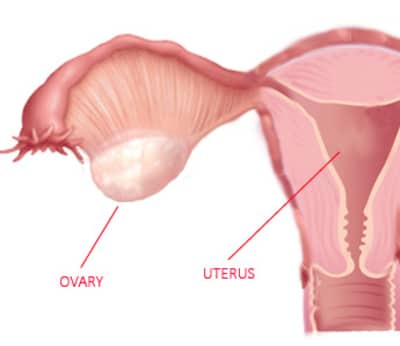How To Know If You Have Milk Allergy: A Comprehensive Guide
A milk allergy can sneak into your life in unexpected ways, whether you’re a child, an adult, or somewhere in between. Often mistaken for lactose intolerance, a milk allergy involves your immune system reacting adversely to proteins found in cow’s milk, leading to a range of symptoms that can sometimes be challenging to decipher. Let’s explore how to identify whether you’re experiencing a milk allergy, what symptoms to watch out for, and when it’s time to consult a healthcare professional.
Milk Allergy vs. Lactose Intolerance: Key Differences
Before we dive into the signs and symptoms, it’s important to understand the difference between a milk allergy and lactose intolerance. Milk allergy involves the immune system—the body mistakes milk proteins as harmful invaders and releases chemicals to combat them. This can cause skin, respiratory, and gastrointestinal issues. Lactose intolerance, on the other hand, is a digestive problem, where the body cannot properly break down lactose, a sugar in milk. It results in discomfort but doesn’t involve the immune system.
Signs and Symptoms of Milk Allergy
Symptoms of milk allergy can range from mild to severe. Some people may experience symptoms within minutes, while others may not react until hours later. Here are the key symptoms to look for:
1. Skin Reactions
- Hives or Rash: Raised, itchy welts may appear on the skin. This is one of the most common signs of milk allergy.
- Eczema Flare-Ups: For those already prone to eczema, consuming milk may lead to a worsening of symptoms.
2. Digestive Issues
- Stomach Pain or Cramping: Milk allergies can cause significant gastrointestinal discomfort, including cramping, nausea, or vomiting.
- Diarrhea or Loose Stools: A common symptom for infants and adults alike. In children, it can also cause frequent spit-ups.
3. Respiratory Problems
- Wheezing or Shortness of Breath: Some individuals may experience wheezing, difficulty breathing, or coughing.
- Nasal Congestion: Milk allergy can cause a runny or stuffy nose, similar to common allergy symptoms.
4. Anaphylaxis: A Severe Reaction
In rare cases, a milk allergy can trigger anaphylaxis. This is a potentially life-threatening reaction that may involve swelling of the throat, difficulty breathing, a rapid drop in blood pressure, and loss of consciousness. Immediate medical attention is required if anaphylaxis is suspected.
Real Stories from Those Living with Milk Allergy
Sarah’s Story: Diagnosing Her Son at Age 2
Sarah noticed her son had developed a red rash and cried uncontrollably after drinking a glass of milk. After multiple trips to the pediatrician and careful food tracking, the allergy was finally diagnosed. “It took us a while to figure out, because we thought it was just a sensitive stomach,” she said. “But after seeing his reaction to yogurt, we realized something more serious was going on.”
John’s Story: Adult-Onset Milk Allergy
John, a 35-year-old software developer, experienced frequent bouts of stomach pain and itching after consuming dairy. “I was convinced I had some weird form of food poisoning, but it kept happening,” he said. A simple allergy test confirmed he had developed an allergy to milk proteins—something more common in children, but clearly not impossible for adults.
How Is Milk Allergy Diagnosed?
If you suspect a milk allergy, it’s crucial to visit a healthcare professional. Allergy testing is often done via skin prick tests or blood tests to check for specific antibodies. A food elimination diet, where dairy is removed from your diet and then slowly reintroduced under medical supervision, can also be useful in diagnosing a milk allergy.
Dr. Angela Wright, an allergist with 15 years of experience, says, “Many people think they can self-diagnose, but testing is critical for managing symptoms properly and preventing severe reactions.” She also emphasizes that an allergy action plan can make a huge difference, particularly for parents managing a child’s allergies.
Management Tips for Living with Milk Allergy
1. Read Labels Carefully
Milk and milk-derived ingredients can hide in unexpected places. Familiarize yourself with label terms like casein, whey, and lactoglobulin that indicate milk presence.
2. Inform Your Social Circle
Letting friends, family, and coworkers know about your allergy helps prevent accidental exposure, especially during social gatherings and work events.
3. Keep an Emergency Plan
Always have an epinephrine injector on hand if prescribed, and make sure people close to you know how to use it. In cases of anaphylaxis, time is of the essence.
4. Seek Alternatives
Thankfully, there are many dairy-free alternatives today—oat milk, almond milk, and soy milk can replace cow’s milk in most recipes, letting you enjoy a wide range of foods without the risk.
When Should You See a Doctor?
If you notice recurring symptoms after consuming dairy products, it’s best to see a healthcare professional. They can help determine whether it’s a milk allergy or another issue and guide you on what steps to take. Waiting too long to address symptoms could lead to more severe reactions down the line.
Final Thoughts
Identifying a milk allergy can be challenging, but understanding the symptoms and taking appropriate action can make a world of difference in your health and lifestyle. Whether it’s a mild skin reaction or something more severe, paying attention to what your body is telling you is the first step toward feeling better and staying safe.
As Dr. Wright puts it, “Milk allergies can be life-changing, but with the right awareness and precautions, it’s possible to live comfortably and confidently.”
About the Author
Reyus Mammadli is the author of this health blog since 2008. With a background in medical and biotechnical devices, he has over 15 years of experience working with medical literature and expert guidelines from WHO, CDC, Mayo Clinic, and others. His goal is to present clear, accurate health information for everyday readers — not as a substitute for medical advice.







